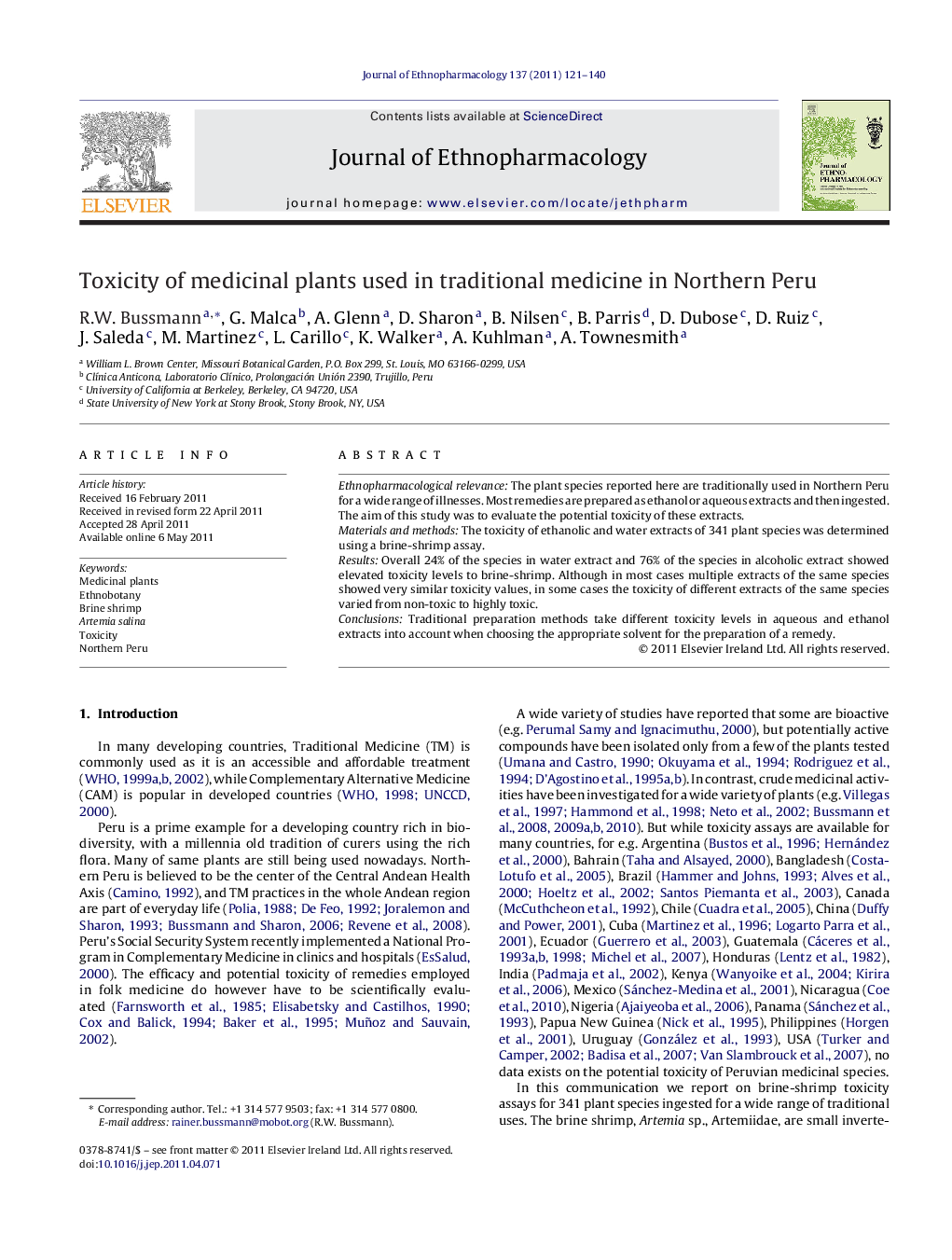| Article ID | Journal | Published Year | Pages | File Type |
|---|---|---|---|---|
| 5838633 | Journal of Ethnopharmacology | 2011 | 20 Pages |
Ethnopharmacological relevanceThe plant species reported here are traditionally used in Northern Peru for a wide range of illnesses. Most remedies are prepared as ethanol or aqueous extracts and then ingested. The aim of this study was to evaluate the potential toxicity of these extracts.Materials and methodsThe toxicity of ethanolic and water extracts of 341 plant species was determined using a brine-shrimp assay.ResultsOverall 24% of the species in water extract and 76% of the species in alcoholic extract showed elevated toxicity levels to brine-shrimp. Although in most cases multiple extracts of the same species showed very similar toxicity values, in some cases the toxicity of different extracts of the same species varied from non-toxic to highly toxic.ConclusionsTraditional preparation methods take different toxicity levels in aqueous and ethanol extracts into account when choosing the appropriate solvent for the preparation of a remedy.
Graphical abstractTraditional preparation methods take different toxicity levels in aqueous and ethanol extracts into account when choosing the appropriate solvent for the preparation of a remedy.Download high-res image (112KB)Download full-size image
